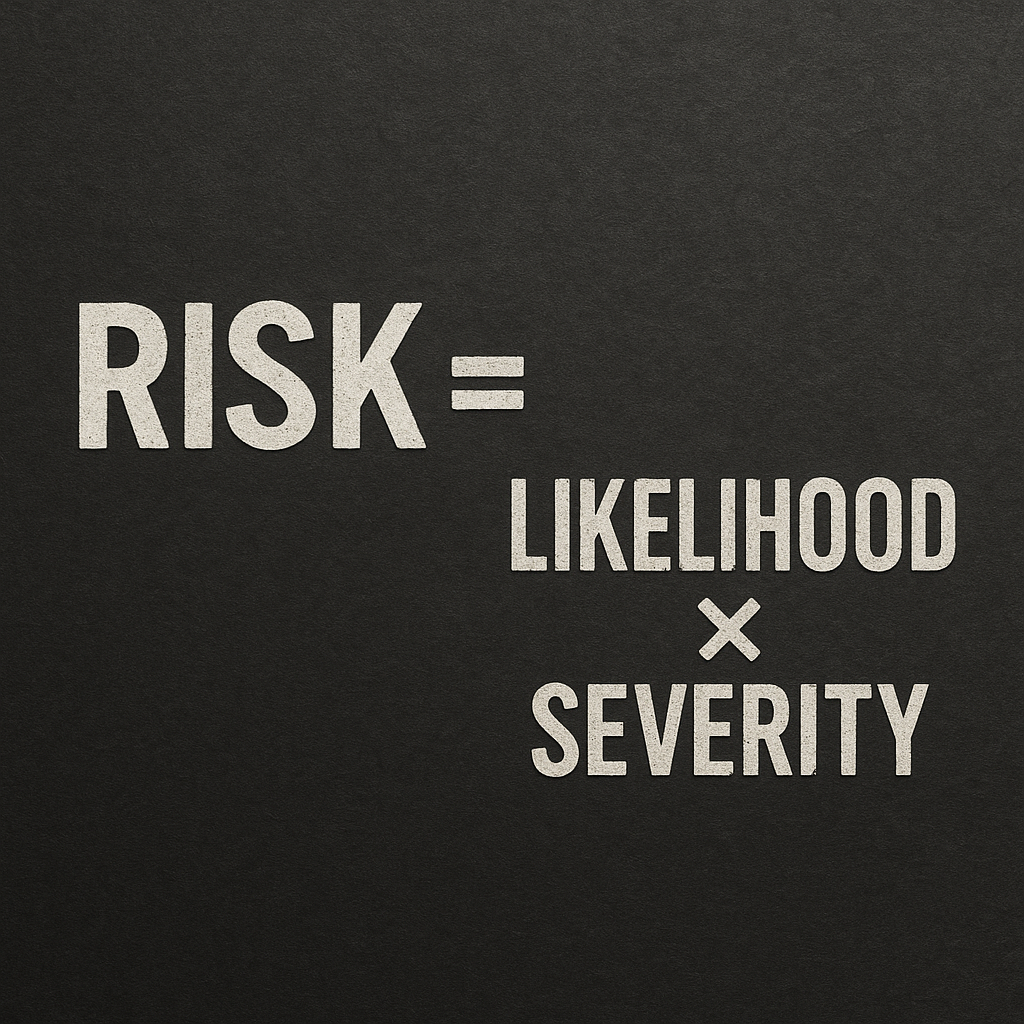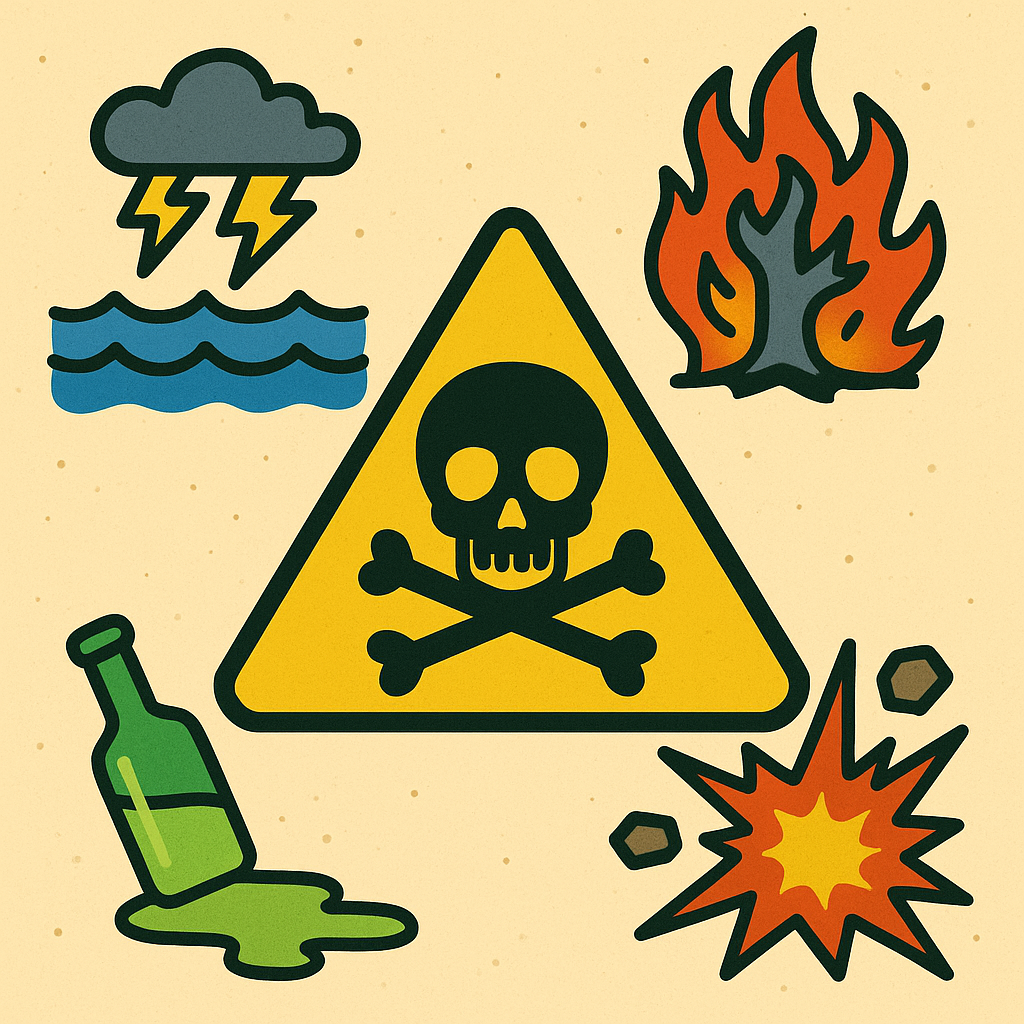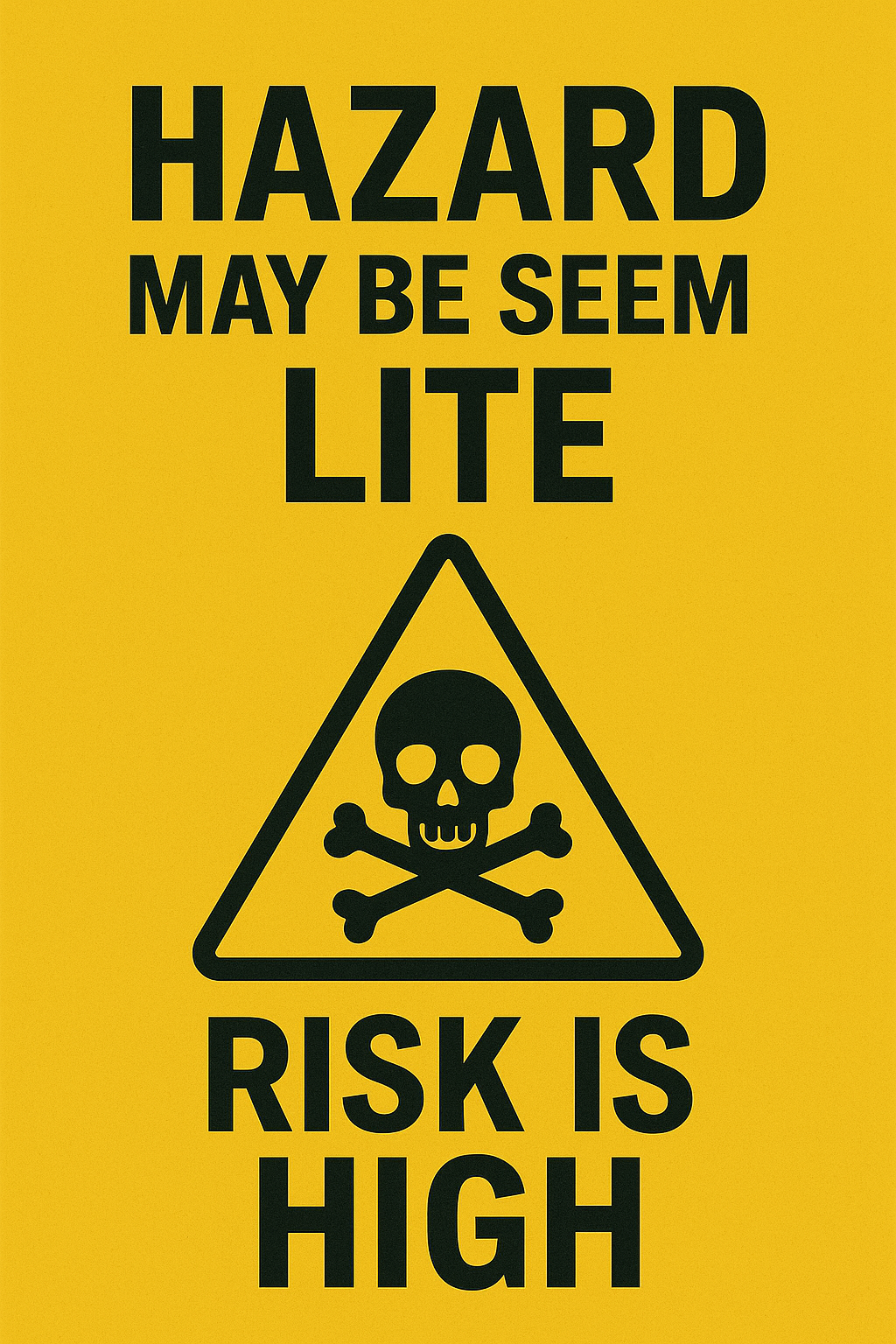🚨 What is a Hazard?
What is a hazard?
A hazard is any source of potential damage, harm, or adverse health effects on something or someone under certain conditions at work. Hazards can be physical, chemical, biological, ergonomic, psychosocial, or environmental.

Understanding what is a hazard is a foundational principle in occupational health and safety (OHSE), as identifying and managing hazards can drastically reduce the risk of injury, illness, or fatalities in the workplace.
📚 Definition of Hazard
According to the Canadian Centre for Occupational Health and Safety (CCOHS), a hazard is “a thing or condition that may expose a person to a risk of injury or occupational disease.”

In simpler terms:
“A hazard is anything that has the potential to cause harm.”
🧩 Difference Between Hazard and Risk
- Hazard = The potential to cause harm
- Risk = The likelihood that harm will occur because of a hazard
Example:
Working near an open flame is a hazard, but the risk increases if a worker wears flammable clothing.

Understanding Hazards and Their Impact
A hazard is any potential source of harm or adverse effect. It can arise from substances, events, or situations that, by their nature, have the capacity to cause damage to health, life, property, or other valuable interests. While the term “hazard” is often used informally to mean “risk,” they are technically distinct.
A hazard refers to the potential for harm, whereas risk refers to the likelihood that the harm will actually occur, taking into account both the probability and the severity of the outcome.
Hazards can be grouped in various ways, and these classifications often overlap. For instance, they can be categorized:
- By origin: such as natural hazards (e.g., earthquakes, floods, wildfires) or human-made hazards (e.g., industrial accidents, explosions, toxic spills).
- By physical characteristics: such as chemical, biological, mechanical, or thermal hazards.
- By the type of damage they may cause: including health hazards, environmental hazards, or economic hazards.
Natural disasters like hurricanes, droughts, and volcanic eruptions are examples of hazards that can devastate entire communities. Similarly, technological or anthropogenic hazards include structural failures, transportation mishaps, and the unintentional release of hazardous materials.
One important category growing in relevance is the climate hazard. These hazards are linked to climate-related phenomena such as rising temperatures, sea-level rise, and increased frequency of wildfires, floods, and storms—many of which are intensified by global warming.

Climate hazards can also interact with other existing threats, creating compound hazards. For example, extreme heat might exacerbate poor air quality, while flooding might worsen water contamination issues.
From a physics perspective, hazards often involve the uncontrolled release or transfer of energy—whether it’s chemical, mechanical, or thermal—that can cause destruction or injury. The presence and intensity of this energy largely determine the risk level, depending on how it interacts with vulnerable people, environments, or systems.
Understanding the nature and classifications of hazards is essential for developing effective strategies to mitigate risk and protect public health and safety.
🧪 Types of Hazards
Understanding the types of hazards helps employers and safety professionals develop targeted control measures. Below are the six primary categories:
1. Physical Hazards
These are environmental factors that can cause harm without necessarily touching them.
Examples:
- Noise
- Vibration
- Radiation
- Heat and cold stress
- Slips, trips, and falls
Control Measures:
- PPE like earplugs, thermal gloves
- Anti-slip flooring
- Regular maintenance
2. Chemical Hazards
These involve exposure to harmful chemicals in solid, liquid, or gas form.
Examples:
- Acids and alkalis
- Solvents
- Fumes and dust
- Pesticides and cleaning agents
Control Measures:
- Proper labeling (WHMIS compliance)
- Ventilation systems
- Use of respirators and gloves
3. Biological Hazards
These come from bacteria, viruses, or other living organisms.
Examples:
- Mold
- Bloodborne pathogens
- Insect bites (e.g., Lyme disease from ticks)
- Food contamination
Control Measures:
- Hand hygiene protocols
- Use of sharps containers
- Vaccinations
4. Ergonomic Hazards
These are related to the design of the workplace and how the worker interacts with it.
Examples:
- Repetitive motions
- Poor posture
- Improper lifting techniques
- Inadequate workstation setup
Control Measures:
- Adjustable furniture
- Training on safe lifting
- Rotating tasks
5. Psychosocial Hazards
These affect a worker’s psychological well-being.
Examples:
- Workplace violence
- Harassment
- High job demands
- Poor work-life balance
Control Measures:
- Mental health support
- Clear reporting procedures
- Anti-bullying policies

6. Environmental Hazards
These are hazards linked to natural events or environmental changes.
Examples:
- Earthquakes
- Floods
- Extreme temperatures
- Poor air quality
Control Measures:
- Emergency preparedness plans
- Environmental monitoring systems
- Climate control infrastructure
🔍 How to Identify Hazards
What is a hazard assessment? It’s the process of inspecting the workplace to find potential hazards before they cause harm.
Key Steps:
- Walkthrough inspections
- Reviewing incident records
- Consulting with workers
- Using safety checklists
- Analyzing task-specific hazards (Job Hazard Analysis)
Tool Tip: Try apps like SafetyCulture or iAuditor for digital hazard inspections. (DoFollow)
📊 Table: Hazard Type vs. Example vs. Control
| Hazard Type | Example | Control Measure |
|---|---|---|
| Physical | Slippery floors | Anti-slip mats, signage |
| Chemical | Solvent fumes | Ventilation, PPE |
| Biological | Contaminated needles | Sharps disposal, training |
| Ergonomic | Prolonged sitting | Ergonomic chairs, stretching |
| Psychosocial | Bullying at work | Zero-tolerance policies |
| Environmental | Heatwaves | Cooling stations, hydration |
🛠️ Controlling Hazards: The Hierarchy of Controls
To manage hazards effectively, apply the Hierarchy of Controls from most to least effective:
- Elimination – Remove the hazard
- Substitution – Replace it with something safer
- Engineering Controls – Isolate people from the hazard
- Administrative Controls – Change the way people work
- Personal Protective Equipment (PPE) – The last line of defense
🧠 Why Understanding “What is a Hazard” Matters
Understanding what is a hazard empowers organizations to prevent injuries, protect property, comply with regulations, and create a culture of safety.
Hazards can be hidden in plain sight, but once identified, they can be controlled or eliminated through smart design and active management.
🏁 Conclusion: What is a Hazard?
In conclusion, answering the question “What is a Hazard?” reveals a wide spectrum of dangers that could affect the physical and mental well-being of workers.
Identifying these hazards and implementing control measures is the cornerstone of every strong safety program.
What is a hazard? It’s anything that could harm you—unless you identify it, respect it, and control it.

No comments yet